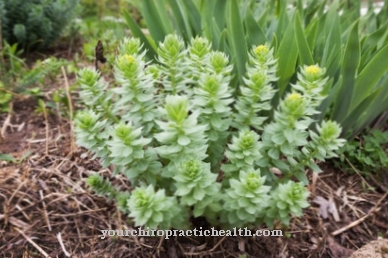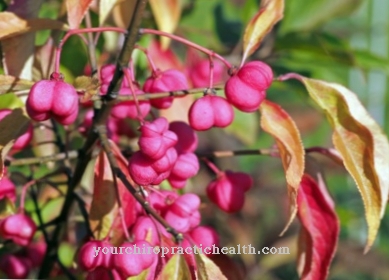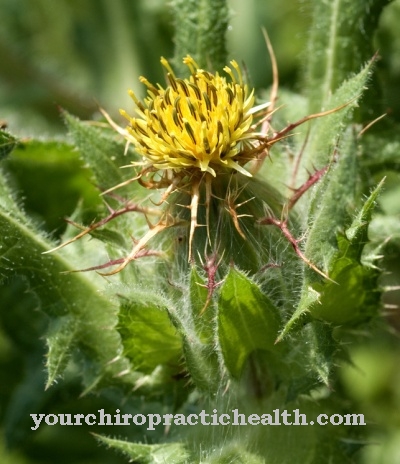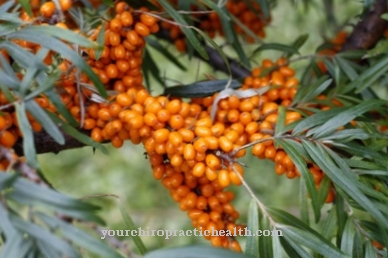To the genus of Adonis count 30 to 35 different species with red or yellow, sometimes white flowers. The Adonis are medicinal plants that are mainly used for diseases of the heart.
Occurrence and cultivation of the Adonis

Some species, such as the summer adonis, grow annually. Other species such as the Spring Adonis are herbaceous plants of several years that form rhizomes as a perennial organ. The upright stems are hairy or hairless, depending on the species, and have alternate leaves. The leaves are palmate or multiply pinnate. The flowers in yellow, red or white are up to seven centimeters in size.
They can be striped or have a darker background. The plants, on which usually more than one flower grows, bloom between March and June and reach heights of between 20 and 50 centimeters. According to Greek mythology, the Adonis rose was created after the death of Adonis from his blood drops, which were transformed into Adonis rose by the Greek goddess Aphrodite.
Effect & application
The Adonisröschen contains various cardiac glycosides. The ingredients include adonitoxin and cymarin but also flavonoids and other glycosides. The Adonis improves the muscle contraction of the heart without causing an increase in the heart rate. In addition, it has a venous toning effect, i.e. it increases the elasticity of the veins and thus encourages the blood to flow back.
In addition, it is said to have a calming and diuretic effect. The above-ground parts of the plant that were picked during the flowering period are used by the Adonis. The spring Adonis, Latin is usually used as a medicinal plant Adonis vernaliswhich is used dry. Since too high a dosage of the ingredients contained in the plant has a toxic effect, preparations from the pharmacy that contain precisely defined amounts of the active substances are recommended.The medicinal plant is available as a powder, and more rarely as a tincture. When taking the powder, the average daily dose is half a gram, the highest single dose is one gram. The maximum daily dose is three grams and should not be exceeded. Due to the toxicity of the Adonis Beauty, a consultation with a doctor about the correct dosage is advisable before use.
In this way, an overdose or possible interactions with other drugs can be avoided, since the Adonis can intensify the effects and side effects of other drugs, such as laxatives, cortisone or drugs for sodium excretion. In addition to individual preparations, the Adonisröschen can be purchased in combination preparations with other medicinal plants.
Some of these preparations contain other medicinal plants with substances that affect the heart, such as lily of the valley, sea onions and oleanders. In other preparations, the Adonis rose is combined with medicinal plants such as arnica, valerian, broom or others. Homeopathic remedies containing Adonis vernalis are also available. A toxic effect is not to be feared here due to the strong dilution.
Usually 5 to 15 drops of the homeopathic preparation are taken three times a day. In folk medicine, Adonis is also used as a tea. Mixed teas with other plants are ideal here to avoid overdosing the Adonis. During treatment with digitalis cardiac glycosides, no additional Adonisröschen preparations may be taken. In the event of a potassium deficiency or pregnancy, it should also be avoided. Likewise, children and breastfeeding women are not allowed to take Adonisröschen preparations.
Importance for health, treatment & prevention
Already in the 16th and 17th centuries the Adonis was used as a medicinal plant for heart failure, urinary problems and dropsy. Today it is mainly used for heart disease. Clinical studies have shown the effectiveness of Adonis Beauty for mild heart failure, especially with accompanying nervous symptoms.
In the case of severe heart failure, however, a more effective therapy is advisable. The complaints should be clarified by a doctor and an appropriate therapy should be discussed with him. In folk medicine, it is also used for asthma, epilepsy, edema, prostate problems and rheumatism. It is said to help against menstrual cramps and fever, low blood pressure and poor circulation as well as bladder and kidney stones.
The homeopathic preparation can be used for the same complaints. However, there is no scientific proof of its effectiveness in diseases other than mild heart failure. The Adonis has no meaning for the prevention of discomfort, as it is ineffective here. In the event of sudden symptoms, the cause should first be clarified. Side effects only occur if the dosage is too high.
Loss of appetite and depression can occur, and men can have breast enlargement. Poisoning caused by excessive concentrations of the active ingredients contained in Adonisröschen manifests itself in nausea and vomiting, diarrhea, nervous restlessness and cramps. Cardiac arrhythmias, hallucinations, psychoses, visual disturbances, confusion and shortness of breath can occur.
In such a case, it is essential to consult a doctor, as severe poisoning from ventricular fibrillation can be fatal. Since the glycosides from Adonis do not accumulate in the body, they are more suitable for long-term treatment in some patients than preparations from the thimble. In addition, the glycosides from the Adonis rose can sometimes be used in the event of an intolerance to thimble preparations, as the Adonis rose has a milder effect.




























